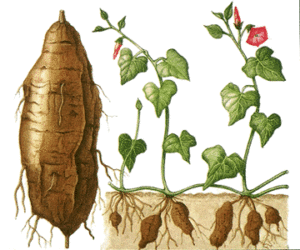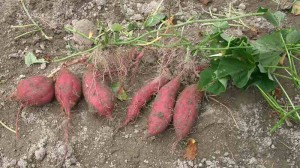 Beginning this week, there will be a temporary reduction in the number of yogurts being produced. But this is for a good reason, as Alon of Izza Pziza explains:
Beginning this week, there will be a temporary reduction in the number of yogurts being produced. But this is for a good reason, as Alon of Izza Pziza explains:
During this time of the year, our small goat farm reduces milk production in preparation for whelping season. Since we do not use hormones and breeding is carried out naturally, the whelping period is a relatively long period of time (January to April.)
We take this opportunity to remind you that our nurturing system is unique – we do not separate the young kids from their mothers. Over the next couple of months there will be a gradual decrease in our product assortment, but we will make sure that the supply is not completely cut off. Each week we will inform you of the products omitted.
You are welcome to pay us a visit! Beginning January, you will be able to see the brand new baby goats and many other wonders, large and small.
Always at your service, Alon and the Izza Pziza team
___________________________________
 Good news from the Ish Shel Lechem bakery as well:
Good news from the Ish Shel Lechem bakery as well:
Ido and Carol’s excellent granola has been joined by a sugarless granola, sweetened only by natural apple concentrate. Just like her sister-granola, nearly all its components are organic and all ingredients are high-quality, healthy and delicious.
Both granolas contain oats (organic), pumpkin (organic), sunflower seeds (organic), flax (organic), whole sesame (organic), natural ground coconut, natural walnuts, natural hazelnuts and natural cashew. One granola is sweetened with organic date honey while her sister is sweetened with natural apple concentrate.
The bakery has lowered the prices of their excellent organic loaves of bread made from such flours as wheat, wheat and seeds, spelt and gluten-free bread.
It is well worth your while to take a look at the entire list in our order system and add a delicious, fragrant loaf of bread to your vegetable boxes.
__________________________________________
Regards from Mother Earth
Over the last couple of weeks we’ve been harvesting beautiful orange tubers – sweet potatoes – and storing them in our packing house. Sweet potatoes were the first to reconnect us to the earth, after a summer in which we ate mostly fruits (tomatoes, cucumbers, peppers, zucchini, squash, pumpkin, watermelon, melon, corn) and pods (yard-long beans, okra, edamame) abounding with juice and seeds, grown hanging from bushes, trellised or lying on the ground. And now come the tubers to bring us back down to earth to the roots, the stability, and the blessing in the clods of soil that even in heavy heat above remain ever-cool below.
In Hebrew, the word for orange is כתום (Katom) from the word for gold (Ketem, also “stain”) because of the golden color comprised of red and yellow. For me, the orange deserves its royal name, and the synergy of cooling weather and the warmth of the orange hue are a perfect balance for this amazing season.
This week we dedicate our newsletter to the pleasant, rooted sweet potatoes which – contrary to most roots – grows in summertime and autumn, not winter, loves heat and hates cold weather (see below. Though the Chubeza sweet potato crop is being harvested now, it commenced its journey about five months ago on the day that Oded of Moshav Yesha came to deliver bundles of green twigs – sticks really, most of them bereft of leaves – bundled together with a rope. We took these twigs (cuttings) and inserted them in the damp mounds of earth we’d prepared. Then we took one step back. Once again, as every year, we were astonished anew by the strange view of dozens of sticks standing in the brown mounds of earth. Sometimes agriculture can seem so weird…
After a few days, the sticks started blooming. Green leaves sprouted from them, and they looked like they were rising from the dead. After a few weeks, a green stripe of plants spread across the bed, and after two months, the whole area was one crowded, tangled carpet of branches, leaves, and lilac-looking flowers. Over 4-5 months, underneath this green entanglement grew chubby orange roots, so sweet and satisfying. Sweet potatoes! A few weeks ago I prepared a newsletter featuring photos of the sweet potato’s journey from a naked stick to that very delicious root hidden under the crowded carpet. This is it.
The origin of the sweet potato lies in tropical South and Central America. The most ancient evidence of sweet potatoes was found in Peru, from where they mysteriously traveled to the rest of Central and South America, all the way to Polynesia. Some say sweet potato seeds were carried from America to Polynesia by birds or by sunken ships that drifted away. Another assumption is that the sweet potato seeds floated along ocean currents from South America to Polynesia, as they can sprout after having been immersed in sea water. Columbus found sweet potatoes in Cuba, brought them along on his journey to Europe, and from there they travelled together with the European conquerors to Africa, India and Asia.
The sweet potato is a member of the renowned Convolvulaceae family, related to the wild field bindweed, the Cuscuta (dodder) and sister to the lovely morning glory found in nature and in your garden. Formally known as Ipomoea batatas, the sweet potato is one of the only members of this large family that is edible, and definitely the only one to be industrially grown for food, a truly unique phenomenon. Like other members of her family, she tends to send out tendrils and twigs far and wide. If allowed, she will climb all over the nearest fence, covering it with a layer of heart-shaped green leaves and beautiful light-purple flowers that open in the morning and close in the afternoon sun.

Years of careful selection of sweet potatoes by farmers and nature have made today’s sweet potato very strong and resistant to (or at least tolerant of) diseases and pests. Sometimes the plants can be carriers of various pathogens that are not actively expressed and do not prevent the plant from growing or developing. Basically, the sweet potato hardly suffers from any problems, and usually grows nicely over a few months’ time. After four months we begin digging them out. First we fumble around, digging in one of the far corners to see what’s hiding down there. Are there any orange tubers? How many? How large are they? Do they seem healthy? Then, if they’re nice and ready, we gradually start digging them out.

When the time has come to harvest, there is no urgency to remove the sweet potatoes from the earth right away and store them. They are well-protected in the earth, even during cold winters, due to the warmer temperature underground. If you remove the sweet potatoes from the earth, they should be brought indoors so they’re not too cold. When the outside temperature falls below 13 degrees Celsius, the storage refrigerator should be at a temperature of 13-15 degrees so the sweet potatoes do not catch cold.
This is also the reason that they should not be stored in your home refrigerator. The sweet potato that grows primarily in warm seasons dislikes cold weather, and refrigeration impairs its taste. Store them in a cool, ventilated place, not in a bag or a sealed container, in order to prevent the accumulation of excess moisture. They need not be hidden from light, because (like radishes and beets) sweet potatoes are roots that contain no chlorophyll, therefore will not turn green (contrary to the dense-stem potato which turns green when exposed to light and should be stored in dark places). High temperatures will make the sweet potato sprout or ferment, thus warmth should be avoided (unless you wish to make liquor).
We keep our harvested sweet potatoes in the packing house for only a short time before sending them to you. Sweet potatoes that are mass-produced for industry and kept till the end of wintertime undergo a process called “curing.” They are pulled from the earth and warmed up in a room that is temperature and moisture-controlled. This process thickens their peelings and they grow scab-like skin to cover areas bruised during the digging-out process. Sweet potatoes which have undergone curing can be stored for longer periods of time.
The luscious, soothing taste of sweet potatoes is an especially great blessing in the cold evenings of autumn, when your sweet tooth craves attention. You can eat sweet potatoes without feeling an iota of guilt, as they are bursting with benefits to your health. The orange color assures high levels of beta carotene, which becomes vitamin A when consumed, a multi-armed warrior for battling cancer in various forms, essential for good eyesight, strengthening your immune system, keeping your skin healthy and contributing to proper growth.
Despite its sweet taste, the sweet potato is considered an “anti-diabetic” vegetable, recommended for diabetics because of its contribution to the balancing of sugar levels in the blood and to reducing the resistance of the cell to insulin – perhaps because of its rich carotenoid content. Along with our friend A, the sweet potato also contains good levels of vitamins B6 and C rich in potassium, magnesium, iron and dietary fiber. This team works to control blood pressure, strengthen bones and prevent osteoporosis, and allow for proper brain function and the development of learning skills in children and babies.
In Chinese medicine, the sweet potato is recommended for weight loss. It strengthens the spleen, which according to Chinese medicine regulates metabolism and our need for sweet foods and food in general. A weak spleen will create a strong need for sweets, and an inevitable weight gain. According to this approach, the body must receive naturally sweet food, i.e., there is no harm in a sweet diet, on condition that the quantity of sweets is limited, natural, and does not derive from processed foods like white sugar or candies. A medium-sized sweet potato contains 150 calories (equivalent to two slices of bread), but it is very filling. Chinese medicine perceives the sweet potato to be one of the most balanced foods and therefore can be eaten by almost anyone. According to the Chinese, the orange color ties it to earth, making it a warming, strengthening food.
So what can you do with your fresh, delicious sweet potatoes? No need to work hard at peeling them. Many of the vitamins and dietary fibers are in the peeling, so don’t pare them—just scrub well. The sweet potato should be cooked immediately after being cut in your kitchen, as its skin will oxidize and blacken once it comes into contact with the air. If you must wait, keep them in a bowl of water to prevent blackening. See our recipe section for more ideas of how to enjoy those autumn sweet potatoes.
Alon, Bat Ami, Dror, Yochai and the entire Chubeza team
______________________________________________
WHAT’S IN THIS WEEK’S BOXES?
Over these last weeks, our boxes abound with “either/or” – the emblem of transitional seasons. Summer vegetables are tuckered out and yield less and less, and winter vegetables have just reached adolescence, not yet able to produce at full output. This is the time to just sit on the autumn fence, one leg straddling the other – a little winter, a little summer – and enjoy something from all the seasons. Bon appetit!
Monday: Potatoes, sweet potatoes, lettuce, cucumbers, tomatoes, carrots/zucchini, bell peppers, New Zealand spinach/ Swiss chard, parsley/coriander/dill, arugula/mizuna. Small boxes only: radishes/daikon/baby radishes.
Large box, in addition: Slice of pumpkin/Thai yard-long beans/okra, kale/totsoi, kohlrabi/fennel, celery/eggplant.
FRUIT BOXES: Bananas, avocado, kiwi. Small boxes: Oranges. Large boxes: Green apples
Wednesday: Sweet potatoes, lettuce, cucumbers, tomatoes, carrots, bell peppers/Thai yard-long beans, New Zealand spinach/celery, parsley/coriander/dill, arugula/mizuna, radishes/daikon/baby radishes, kohlrabi/fennel/beets.
Large box, in addition: Potatoes. Swiss chard/kale/totsoi, broccoli/eggplant.
FRUIT BOXES: Bananas, kiwi, green apples. Small boxes: Avocado. Large boxes: yellow plum.
